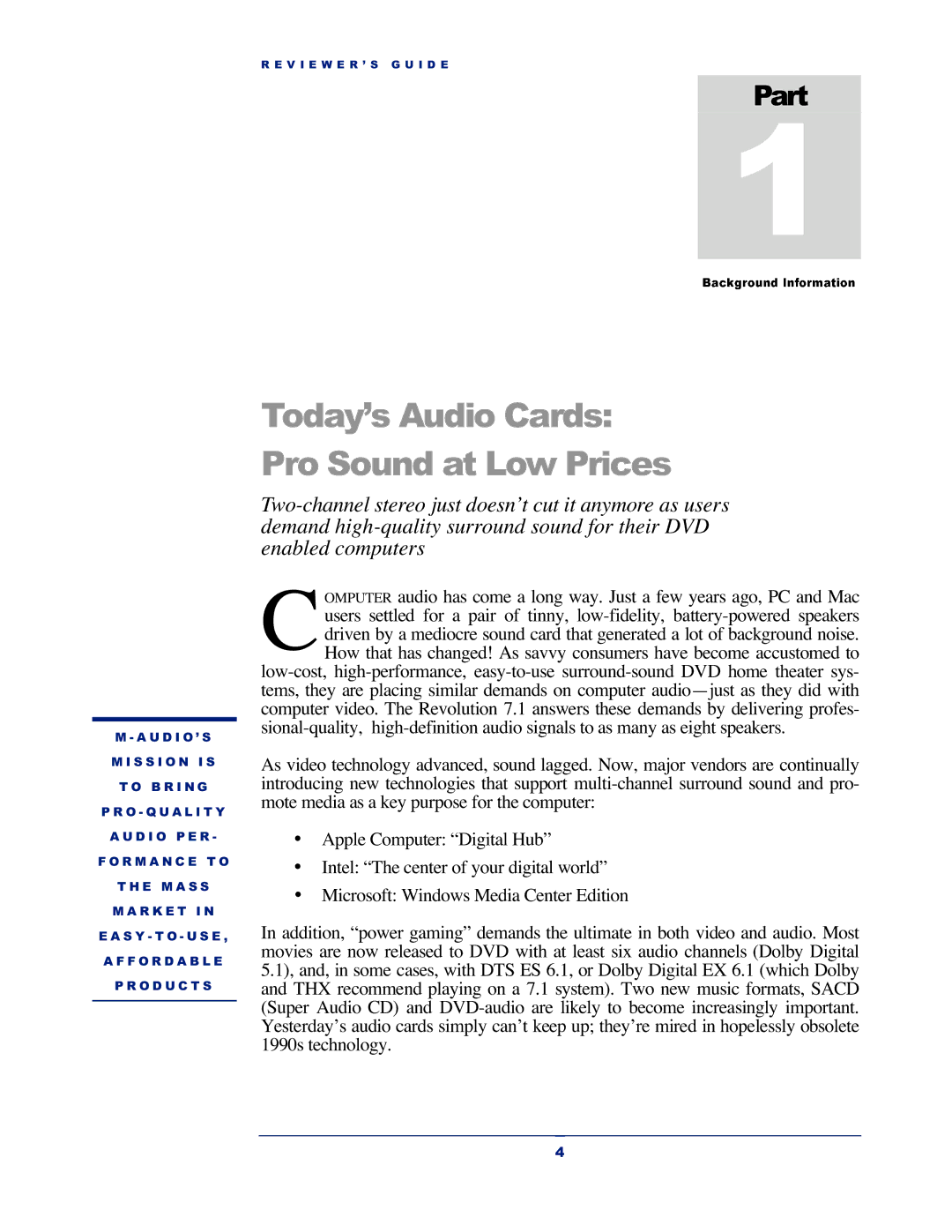
R E V I E W E R ’ S G U I D E
Part
1
M - A U D I O ’ S
M I S S I O N I S
T O B R I N G
P R O - Q U A L I T Y
A U D I O P E R -
F O R M A N C E T O
T H E M A S S
M A R K E T I N
E A S Y - T O - U S E ,
A F F O R D A B L E
P R O D U C T S
Today’s Audio Cards:
Pro Sound at Low Prices
COMPUTER audio has come a long way. Just a few years ago, PC and Mac users settled for a pair of tinny,
As video technology advanced, sound lagged. Now, major vendors are continually introducing new technologies that support
•Apple Computer: “Digital Hub”
•Intel: “The center of your digital world”
•Microsoft: Windows Media Center Edition
In addition, “power gaming” demands the ultimate in both video and audio. Most movies are now released to DVD with at least six audio channels (Dolby Digital 5.1), and, in some cases, with DTS ES 6.1, or Dolby Digital EX 6.1 (which Dolby and THX recommend playing on a 7.1 system). Two new music formats, SACD (Super Audio CD) and
4
